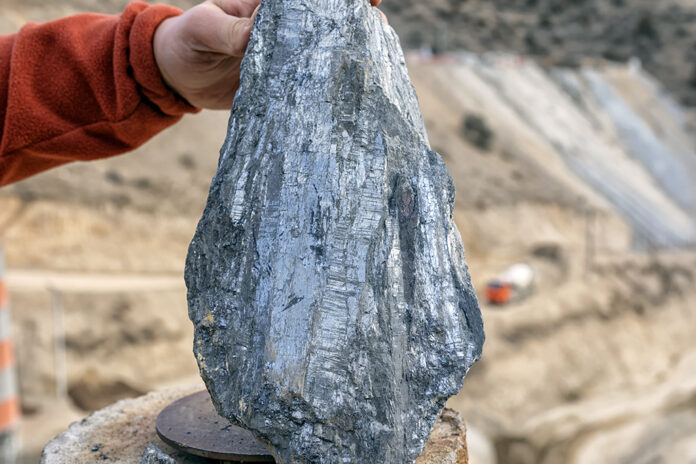China’s imposition of export permits for graphite from December 1 is the latest in a series of moves designed to safeguard Beijing’s dominance in critical material supply chains.
Earlier curbs covered exports of rare earth processing technology from February and increased control of shipments of gallium and germanium since August.
The Controls
The new controls will affect natural and synthetic graphite, which are used in anodes of lithium-ion batteries.
China produces much more graphite than it needs and refines more than 90% of the world’s graphite into the anode material.
Top buyers of graphite from China include the United States, Japan, India and South Korea, all of which are members of the Western-focused multilateral Mineral Security Partnership.
South Korea and Japan are the world’s second and third-largest anode producers, controlling 47% and 39% of the non-China market, respectively.
The measures are commonly viewed in the West as retaliation to the U.S. CHIPS and Science Act of 2022. However, they are compatible with China’s Export Control Law of 2020.
Graphite features on the U.S. government’s list of “critical” materials. Among anode consumers in the United States are its four operating lithium-ion battery plants. A further 21 facilities are in development. The material also features on the U.S. National Defense stockpile list.
Commercial Fallout
The Chinese announcement sent shares in China’s new energy vehicle and battery makers soaring. So, too, the valuations of several Western graphite explorers and developers.
From a commercial viewpoint, Beijing’s move can be understood as an effort to provide upstream subsidies to its battery producers.
South Korean analysts said that the immediate impact would on be the cost of batteries produced outside of China, boosting the price-competitiveness of Chinese inputs and Chinese electric vehicles (EVs). South Korea’s trade ministry held an emergency meeting with its battery producers and material makers to discuss responding to the controls.
Meanwhile, Japan warned China that it might take the dispute to the World Trade Organization (WTO). The last time Japan raised China export curbs at the WTO over rare earths was in 2011. The case took three years before Japan won.
Synthetic Graphite
Lithium-ion batteries represent 60% of world demand for graphite, up from 26% four years ago. Alternatives to graphite (silicon, lithium metal, niobium titanite or iron flow solution) are in experimentation but are unlikely to be commercialized soon. However, Nasqaq-listed Enovix is making a silicon-based anode cell that it says has 10 times the energy of conventional graphite-based anodes.
The dominant anode formulations use a combination of synthetic and natural graphite, from 40/60 to 60/40 mix, on average. Mined natural graphite requires less energy to produce and is cheaper, but synthetic graphite offers faster charging and longer battery life.
However, synthetic graphite is obtained from petroleum coke or coal tar, relying on fossil fuels and undermining the metals’ credentials as contributors to the energy transition.
Despite such concerns, China’s production has shifted towards synthetic graphite, which now represents 70% of the country’s output.
Companies such as BTR New Material Group, Kuntian New Energy Technology and Ningbo Shanshan Technology dominate China’s exports.
Several Western companies are also developing synthetic graphite production, including Nasdaq-listed Novonix, NYSE-listed GrafTech and privately held Anovion Technologies.
Last month, Mumbai-based Epsilon Advanced Materials announced it would build a synthetic anode plant in North Carolina, its first project in the United States.
Natural Graphite
Natural graphite—a mined product—exists in various forms, of which only flake graphite can be used in batteries.
China dominates natural graphite mining, although new projects backed by Western firms have sprung up in the United States, Canada, Sweden, Tanzania, Mozambique and Madagascar.
Most are early stage. The more advanced face a challenging environment to finance the associated capital expenditure.
OTC-quoted Syrah Resources’ mine in Mozambique is the only producing mine controlled by Western interests. The company’s stock jumped 62% on the Chinese export permit news but remains 72% below the levels of a year ago.
Supply Sources
Several projects are being developed independently of Chinese control. Yet, the timelines are challenging as banks cannot easily hedge the commodity price exposure, and the baskets of product prices vary widely between deposits.
Bankers also fear that in a market so heavily dominated by Chinese anode producers, any graphite miner will eventually depend on offtake partners in China.
Given the Chinese propensity to renege on offtake agreements, Western banks are reluctant to finance projects as there is no easy recourse against counterparty risk.
This has already delayed Australia-based Black Rock Mining’s development in Tanzania of the world’s second-largest graphite mine, which will eventually produce 340,000 tonnes per year. Black Rock has tied up with South Korea’s Posco as Western capital allocators declined to take on the Chinese counterparty risk.
This is a growing financial constraint, including beyond the critical minerals market.
Other projects:
• OTC-quoted and TSX-listed Graphite One is developing its Graphite Creek project in Alaska, the largest U.S. graphite deposit. The U.S. Federal Permitting Steering Committee has designated it a High Priority Infrastructure Project.
• ASX-listed Talga, a vertically integrated mine-to-anode producer, is developing a high-grade graphite quarrying Vittangi project in northern Sweden. The company is working on the EU’s first coated graphite anode plant and has non-binding offtake agreements with Renault, Mercedes Benz, Stellantis, and Saft.
• London-listed Green Roc is advancing an Amitsoq graphite project in the Kujalleq area of southern Greenland. After two years of getting to capacity, the project will produce 400,000 tonnes of graphite concentrate annually for over two decades. The company has a U.K. grant for a feasibility study on downstream anode production. However, Greenland is not immune to anti-mining activism.


